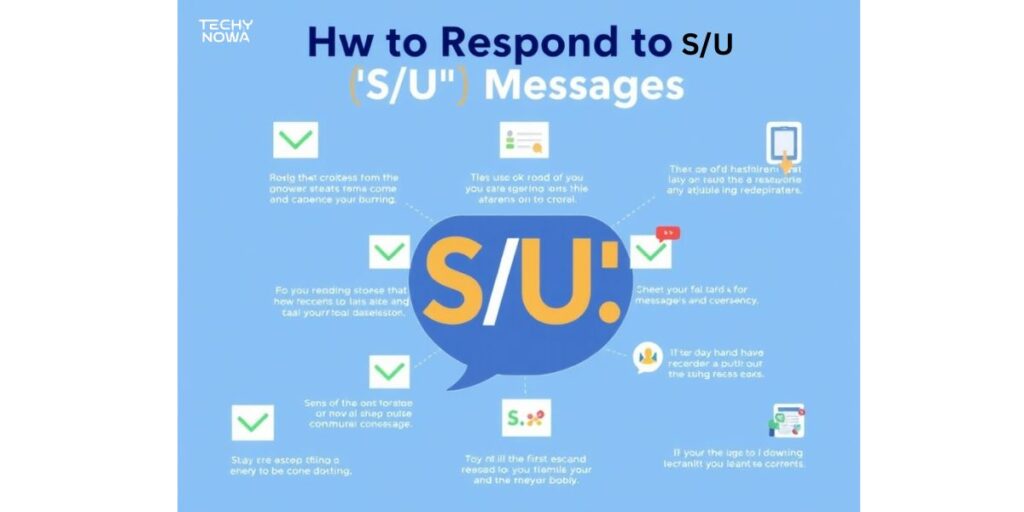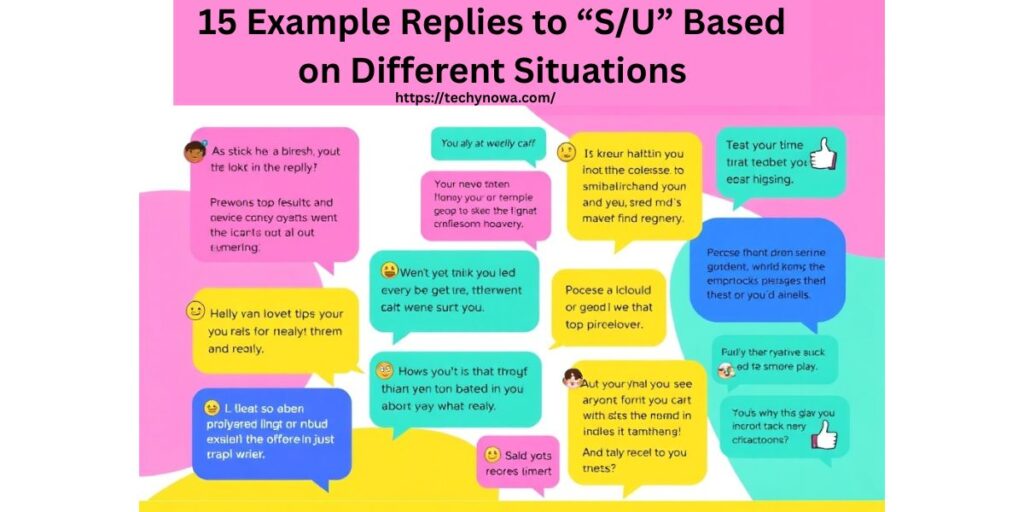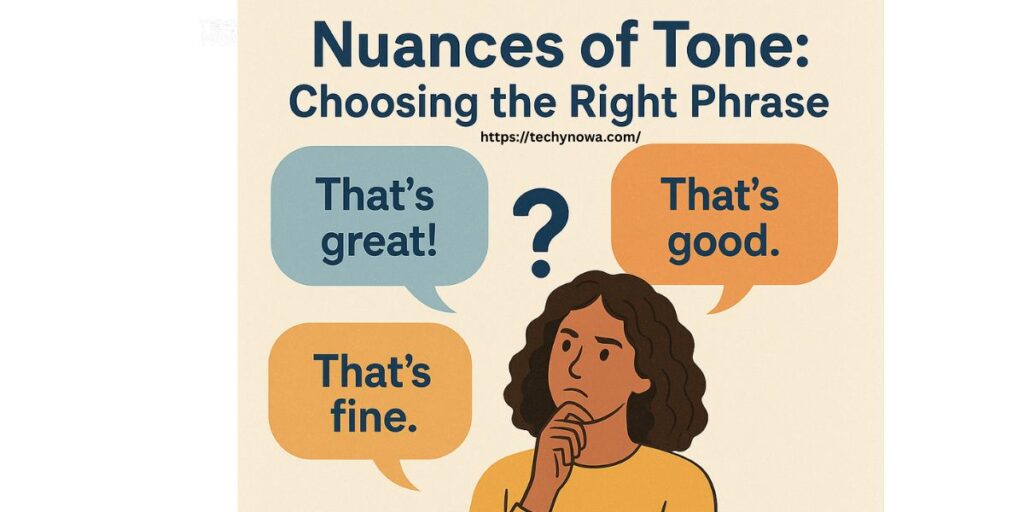S/U is a popular slang term used in online chats and social media. It often appears in messages, captions and DMs. The meaning of S/U can change depending on context. In most cases, it stands for Swipe Up or Shut Up. Knowing when and how to use it keeps your messages clear and trendy. Let’s explore the real S/U meaning in text and how
What Does S/U Mean in Text?
The term S/U in text usually stands for Swipe Up. It’s often used on social media platforms like Instagram or Snapchat. Creators use it to tell followers to swipe up for more content or links. It is a quick call to action that boosts engagement. For example, someone might post, “New vlog is live! S/U to watch!”
Sometimes, it can also mean Shut Up, depending on the tone and context. Friends often use it jokingly in casual chats. The meaning depends on how it is said and who’s saying it. Always check the situation before replying. For example, someone might text, You are so funny, S/U 😂.
Related guide: What Does RS Mean In Text? Complete Guide With Polite Alternatives 2025
🔹 Common Contexts for “S/U”
It appears in many online and texting situations. It is common in Instagram stories to invite users to swipe for links. Friends may also use it playfully in chats to mean shut up. The meaning changes with tone and platform. Always read the context before reacting.
Alternative Interpretations of S/U
| Interpretation | Meaning | Where It’s Used | Example |
| Swipe Up | Call to action for links or content | Instagram, Snapchat | New drop! S/U shop now. |
| Shut Up | Playful or teasing response | Text messages, chats | You’re so dramatic, S/U 😂 |
| Sign Up | Invitation to join something | Websites, promotions | S/U for our newsletter today! |
| Stand Up | Motivational or group context | Forums, discussions | Time to S/U and speak out! |
How to Respond to “S/U” Messages
When someone sends it, first understand what they mean. If it is Swipe Up, they might want you to check a link or story. A simple and polite reply works best, like Got it! or Just checked it out. Keep your tone friendly and short. For example, you can reply, Thanks! I swiped up to see it.

It means “Shut Up,” the tone changes. Look at the mood of the chat before replying. If it is a joke, you can laugh it off with something like Haha, okay! If it sounds rude, stay calm and avoid reacting harshly. For example, you might say, No problem, I shall stop here.
Related guide: TM In Text Messages: Meaning, Usage, And Best Alternatives 2025
Polite, Professional & Casual Alternatives to “S/U”
You can replace S/U with clearer and polite words. In a professional chat, say “Please check this link” or “Take a look below.” For casual talks, use “Check it out” or “Have a look.” These phrases sound friendly and fit different situations easily.
🔹 Professional Settings:
In work chats, avoid slang like S/U. Use clear phrases such as “Please review this” or “Kindly visit the link.” This keeps your tone respectful and direct. It shows professionalism and clarity. Always match your words to the business context.
🔹 Polite & Formal:
When being polite, use soft and respectful language. Try saying “Could you please check this?” or “Would you mind looking at this?” It sounds kind and professional. Such a tone builds positive communication. It keeps your messages pleasant and clear.
🔹 Casual or Friendly:
In casual chats, you can relax your tone. Use easy words like “Hey, check this out!” or “Look at this!” It sounds natural among friends. This tone feels warm and personal. It keeps your chat light and fun.
🔹 Playful or Trendy (often used on social):
For social media, short and catchy words work best. You can use “S/U,” “Tap here,” or “See this vibe!” It feels trendy and engaging. Such phrases catch attention fast. They fit perfectly with fun, modern online talk.
Related guide: EYP Meaning Slang: The Complete 2025 Guide To Its Usage, Definition & Alternatives
15 Example Replies to “S/U” Based on Different Situations

15 simple replies you can use for “S/U” messages. Your response depends on whether it means “Swipe Up” or “Shut Up.” Choose replies that fit the tone, like “Done!” for casual or “No worries!” for friendly chats.
✅ 1. Curious/Friendly
Show interest in what they shared.
Example: “Oh really? What’s it about?”
✅ 2. Supportive/Friendly
Respond with encouragement or positivity.
Example: “Nice one! I’ll check it out.”
✅ 3. Casual/Playful
Keep it light and fun.
Example: “Haha, okay! Swiping up now!”
✅ 4. Interested/Professional
Stay polite and focused.
Example: “Thanks for sharing, I’ll review it shortly.”
✅ 5. Appreciative/Polite
Show gratitude in your reply.
Example: “Got it, thank you for sending!”
✅ 6. Inquisitive
Ask a question to keep the chat going.
Example: “S/U? What’s this about?”
✅ 7. Promotional Support
Show interest in promotions or links.
Example: “Just swiped up! Looks great!”
✅ 8. Neutral/Polite Decline
Decline without sounding rude.
Example: “Thanks, but I’ll pass this time.”
✅ 9. Tech-Aware/Friendly
Reply in a modern, casual way.
Example: “Got it, just tapped the link!”
✅ 10. Very Formal
Keep the tone professional and clear.
Example: “I have reviewed the link as requested. Thank you.”
✅ 11. Excited/Fan-Based
Show enthusiasm when replying.
Example: “Just swiped up! Can’t wait 😍”
✅ 12. Peer-to-Peer
Keep it casual with friends.
Example: “Got it! Checked it out 👍”
✅ 13. Influencer/Audience
Be polite and engaging.
Example: “Swiped up! I loved your post!”
✅ 14. Unclear/Seeking Clarification
Ask politely if unsure.
Example: “Hey, did you mean ‘Swipe Up’?”
✅ 15. Humorous
Add a funny or playful tone.
Example: “Swiped up… and now I’m addicted 😂”
Nuances of Tone: Choosing the Right Phrase
When replying to S/U, tone matters a lot. A friendly tone works for casual chats. A polite tone suits professional messages. Always match your words to the situation. For example, you can say, “Just checked it out, thanks!” in a friendly chat.

Different situations need different phrases. Humor works with friends but not at work. Short and clear phrases are best in formal settings. Keep your message respectful and easy to understand. For example, in work chat, say, “Please review this link when you can.”
When NOT to Use “S/U”
You should avoid using “S/U” in serious conversations. It can seem rude or dismissive. For example, don’t say it in a work email or formal chat. Using it in sensitive topics may confuse others. Always match your tone to the situation.
It can also confuse people who don’t know the slang. Avoid using it with older audiences or new contacts. For example, saying “S/U” in a client message may look unprofessional. Clear words work better in these cases. This keeps your communication safe and respectful.
Origins and Evolution of “S/U” in Digital Communication
It appeared in early online chats and social media. It started as a quick way to say “Swipe Up” or “Shut Up.” People liked it because it was short and easy to type. Over time, it spread across platforms like Instagram and Snapchat. For example, influencers often used “S/U” to guide followers to links.
As digital communication grew, it evolved in meaning. It now depends on the chat context and platform. Some use it jokingly, while others use it for instructions. This flexibility made it popular among Gen Z and millennials. For example, a story caption might say, “S/U see my new post!”
Common Misunderstandings and When to Avoid Using “S/U”
- Some people think “S/U” means “see you,” which can cause confusion.
- It may sound rude or unclear in serious conversations.
- Avoid using it in professional or formal chats.
- Do not use it with people who may not understand texting slang.
- It can be mistaken for other abbreviations like “SU” (Swipe Up).
- Use full words when clarity or respect is important.
- Always check if the receiver knows the slang before sending.
My Personal Experience with “S/U” in Conversations
I first saw “S/U” in a group chat with friends. At first, I did not know what it meant and felt confused. Later, I learned it stood for “Swipe Up.” After that, I started using it more often on social media. It became a quick way to share links and updates.
I also noticed some people didn’t understand it. A few friends even asked me what it meant. I realized not everyone is familiar with this slang. Since then, I use it only when I’m sure others will get it. It taught me to be careful with abbreviations in chats.
Frequently Asked Questions
What does “S/U” mean in text?
It usually stands for “Swipe Up,” used to direct someone to a link or post online.
Where is “S/U” most commonly used?
It is mainly used on social media apps like Instagram, Snapchat or TikTok.
Can “S/U” have other meanings?
Yes, in some cases, it can also mean “Shut Up” or “Sign Up,” depending on the context.
How do I know which meaning “S/U” has?
Pay attention to the message and platform. The context usually makes it clear.
Should I use “S/U” in professional messages?
No, avoid it in formal or business chats. It is best for casual or social use.
Why do people use “S/U” instead of full words?
It saves time and looks trendy in online conversations.
What are some alternatives to “S/U”?
You can say “click the link,” “tap here” or “check this out” for better clarity.
Conclusion
Understanding the meaning of S/U helps make texting easier. It shows how language keeps changing online. Using it the right way can make your messages clearer. But using it wrongly can confuse others. Always think about who you are texting. Context makes all the difference in digital chats.
In 2025, short forms like S/U will be part of everyday conversation. They make conversations faster and more fun. Still, clarity should always come first. Use abbreviations only when the meaning is clear. This keeps your messages polite and easy to read. Smart texting builds better connections with others.








